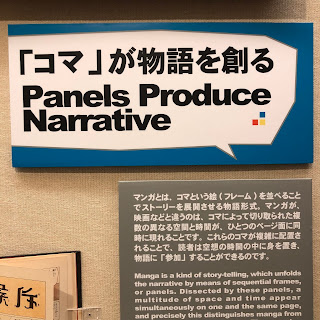I've been on the road (or more accurately in airplanes) a huge amount this fall, and have visited a number of thought-provoking exhibits and museums. I saw things I loved, things I definitely didn't love, and things that raised interesting questions for me. So now, despite a two-month gap in blogging, I'm going to attempt to catch up with all of it over the next couple weeks. First up, the Manga Museum in Kyoto, Japan.
After an intense few days at the ICOM meeting, Katrin Hieke and I took an extra couple days to explore Kyoto a bit more--and for some reason we decided that the Kyoto International Manga Museum would be first on our list--and we were so glad we did!
This is a museum where a mission perfectly meshes with an understanding of audience and with exhibition design and content. For the uninitiated (like me), manga is Japanese comics and cartooning.
The permanent exhibit does a great job in posing--and then answering--all kinds of questions about manga:
It also included a fascinating section on who makes money in manga, something rarely seen when talking about creative work, but a part of all creative work.
The permanent exhibit also explored how a storyline is shaped--which reminded me to go back to Scott McCloud's Understanding Comics, a great tool in helping us think about narrative in exhibitions.
In this permanent exhibit section, you were surrounded by manga books--so many of them, and it was delightful just to be able to take them down and read. Everyone did!
There were different types of temporary exhibitions--including one focusing on a trailblazing woman manga artist. Another temporary exhibit was sort of a playoff between different types of toys. You could make an appointment to consult with a manga artist about your own work, and even spend a bit of time on a computer (although tech was a very small part of this museum).
But what where mission, design and activities merged together was in the places all over the museum that were for reading. Everyone felt welcome to pull out a book, sit down, lie down, sprawl out, and read. There are lots of rules in Japanese society, here it felt like the only rules were to read, to be respectful of others reading, and to enjoy yourself.
There were a few key takeaways for me:
- Understand that your museum attracts both newbies (that was me) and specialists (those who want a deep dive into manga). Provide opportunities for both.
- Design spaces so people understand what you can do in them.
- Great label-writing --clear, concise, fun--always matters.
- Make room for passion. You could see it in the work of the artists, but also in the intense focus of visitors.
















No comments:
Post a Comment